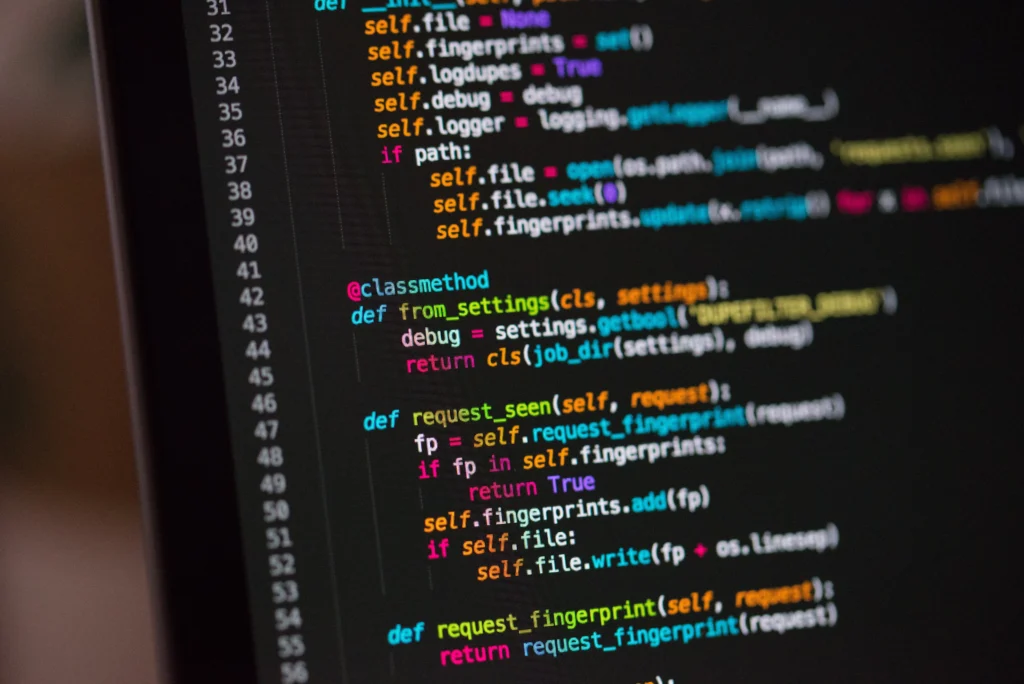5 Advanced Python Concepts to Become a Pro

Python is a dynamically typed language and is widely used by programmers all over the world. Getting started with learning Python is relatively easy compared to other low-level languages like C and C++. To truly master a language, one has to learn about the advanced concepts too. Because these concepts are highly beneficial in different scenarios in day-to-day problems while programming. So, let’s jump into some advanced Python concepts to up your Python game.
First, let’s look at the list of these advanced Python concepts:
- Generators and Iterators
- Decorators
- List Comprehensions
- Meta Classes
- Multithreading and Multiprocessing
1. Generators and Iterators:
One of the advanced concepts in Python is generators and iterators. Basically, they serve the purpose of handling large datasets. With these, we can process data one element at a time, without requiring to store the entire dataset in the memory.
def fibonacci_generator(n):
a, b = 0, 1
count = 0
while count < n:
yield a
a, b = b, a + b
count += 1
# Alternatively, use an iterator directly with the next() function
fib_iterator = fibonacci_generator(7) # Generate Fibonacci sequence up to 7 numbers
print(next(fib_iterator)) # 0
print(next(fib_iterator)) # 1
print(next(fib_iterator)) # 1
print(next(fib_iterator)) # 2
print(next(fib_iterator)) # 3
print(next(fib_iterator)) # 5
print(next(fib_iterator)) # 8Output:
0
1
1
2
3
5
8The performance of the code can be substantially increased by employing iterators and generators. That is why when playing around with large datasets, code can be highly optimized by employing such concepts in Python.
2. Decorators:
Up next, we have Decorators. Decorators are extensively used in Python to add functionalities such as logging, timing, caching, and access controls to already existing functions and classes. With the use of decorators, we can write cleaner and maintainable code. This makes the code more Pythonic.
Decorators are used on a target method by using the ‘@’ symbol.
def uppercase_decorator(func):
def wrapper():
original_result = func() # Call the original function
modified_result = original_result.upper() # Modify the result
return modified_result
return wrapper
@uppercase_decorator
def greet():
return "hello, world!"
print(greet())
Output:
HELLO, WORLD!3. List Comprehensions:
For loops are widely used in Python. They cover multiple lines and the IDE takes some time to loop over them line by line which might take some time. Instead, we can use list comprehensions in Python, which are written on a single line and are faster than traditional loops. List comprehensions are typically faster than loops because they employ a more optimized internal mechanism for iterating through the collection, resulting in improved performance. Furthermore, you can perform transformations and filtering in just a single line.
# Example 1: Squaring numbers
numbers = [1, 2, 3, 4, 5]
squared_numbers = [num ** 2 for num in numbers]
print('Squared Numbers: ', squared_numbers)
# Example 2: Filtering even numbers
numbers = [1, 2, 3, 4, 5]
even_numbers = [num for num in numbers if num % 2 == 0]
print('Even numbers: ',even_numbers)
# Example 3: Creating tuples from two lists
names = ['Alice', 'Bob', 'Charlie']
ages = [25, 30, 35]
person_tuples = [(name, age) for name, age in zip(names, ages)]
print('Person Tuples', person_tuples)
Output:
Squared Numbers: [1, 4, 9, 16, 25]
Even numbers: [2, 4]
Person Tuples [('Alice', 25), ('Bob', 30), ('Charlie', 35)4. Metaclasses:
Metaclasses are an advanced Python concept that enables you to define the behavior of classes. By employing metaclasses, you can control how classes are actually created and then interacted with.
For example, using this advanced Python concept, you can add or modify class attributes, you can customize method resolution orders, and bind the code to use specific coding standards.
class MyMeta(type):
def __new__(cls, name, bases, attrs):
# Modify the attributes of the class dynamically
attrs['custom_attribute'] = 42
# Create and return the new class object
return super().__new__(cls, name, bases, attrs)
# Create a class using the custom metaclass
class MyClass(metaclass=MyMeta):
pass
# Access the custom attribute added by the metaclass
print(MyClass.custom_attribute)
Output:
425. Multithreading and Multiprocessing:
Multithreading and multiprocessing are advanced Python concepts that facilitate concurrent and parallel programming. With the use of multithreading, you can perform tasks simultaneously. These tasks are mostly I/O-bound tasks. While in the case of multiprocessing, we have the ability to use multiple processor cores for tasks that are computationally intensive. Python provides these features by multiprocessing and threading modules.
Multithreading Example:
import threading
import time
# Function to be executed by each thread
def countdown_thread(n):
while n > 0:
print(f"Thread {threading.current_thread().name}: {n}")
n -= 1
time.sleep(1)
# Create multiple threads
threads = []
for i in range(3):
thread = threading.Thread(target=countdown_thread, args=(5,))
threads.append(thread)
thread.start()
# Wait for all threads to finish
for thread in threads:
thread.join()
print("All threads have finished.")
Output
Thread Thread-1: 5
Thread Thread-2: 5
Thread Thread-3: 5
Thread Thread-1: 4
Thread Thread-2: 4
Thread Thread-3: 4
Thread Thread-2: 3
Thread Thread-1: 3
Thread Thread-3: 3
Thread Thread-1: 2
Thread Thread-2: 2
Thread Thread-3: 2
Thread Thread-2: 1
Thread Thread-1: 1
Thread Thread-3: 1
All threads have finished.Multiprocessing example:
from multiprocessing import Process,current_process
import time
# Function to be executed by each process
def square_numbers_process(numbers):
print('Current Process: ', current_process().name)
squared_numbers = [num ** 2 for num in numbers]
print(f"Process: Squared numbers - {squared_numbers}")
if __name__ == "__main__":
numbers = [1, 2, 3, 4, 5]
# Create multiple processes
processes = []
for _ in range(3):
process = Process(target=square_numbers_process, args=(numbers,))
processes.append(process)
process.start()
# Wait for all processes to finish
for process in processes:
process.join()
print("All processes have finished.")
Output:
Current Process: Process-3
Process: Squared numbers - [1, 4, 9, 16, 25]
Current Process: Process-2
Process: Squared numbers - [1, 4, 9, 16, 25]
Current Process: Process-1
Process: Squared numbers - [1, 4, 9, 16, 25]
All processes have finished.If you want to unlock the full potential of Python, learning about the above-advanced concepts is highly recommended. Python has an extensive ecosystem and a very supportive community. So, for beginners, the learning curve is not deep. Anyone can get started with it easily. But, pivoting from a beginner to a pro will require a lot of practice and time. So, whether you plan on doing web development or you want to explore machine learning problems, these advanced concepts will surely come in handy.
Happy learning!
Talha is a seasoned Software Engineer with a passion for exploring the ever-evolving world of technology. With a strong foundation in Python and expertise in web development, web scraping, and machine learning, he loves to unravel the intricacies of the digital landscape. Talha loves to write content on this platform for sharing insights, tutorials, and updates on coding, development, and the latest tech trends






